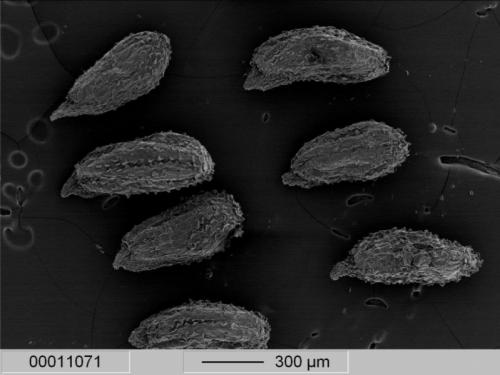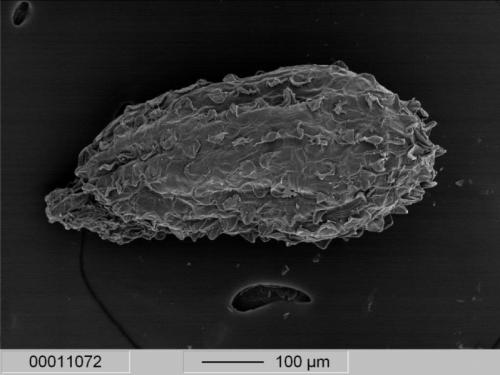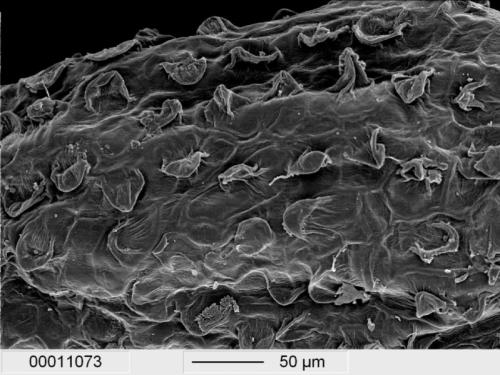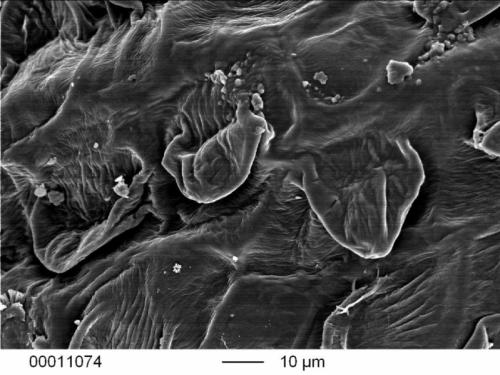STRICTIFLORA A.Gray, 1852 (engl./ fr.)
Synonym : Cotyledon strictiflora (Gray) Baker (1869)
Series Angulatae
Type : Wright 228a, mountains west of the pass of the Limpia, Texas, USA, 28. August 1849; ca 1400 m.
Etymology : For the narrow, straight inflorescences.
Distribution : USA (Texas), Mexico (Coahuila, Chihuahua, Durango, Nuevo León).
First Description by Gray in Plantae Wrightianae 1: 76. 1850 :
Foliis radicalibus spathulato-lanceolatis, caulinis lanceolatis parvis, floralibus similibus flore dimidio brevioribus, floribus breviter pedicellatis arcte secundis appresso-erectis in spicam simplicem strictam confertis, petalis longe attenuato-acuminatis sepala oblonga duplo superantibus.
Mountains west of the pass of the Limpia; Aug.
"Flowers scarlet", in a very strict and close secund raceme or spike, of six or eight inches in length; the flowers two thirds of an inch long; pedicels two or three lines long.
Description by Walther in Echeveria, p. 249, 1972 :
Stem very short or none, usually simple.
Leaves sometimes semi-deciduous during winter, about 20, ascending-spreading, rhomboid-oblanceolate, narrowed to base, flat, thinnish, acute, 7 - 9 cm long, 15 - 20 mm broad, greyish or glaucous at least when young.
Inflorescences one to three, simple, secund, peduncle strict, erect, to 20 cm tall, to 6 mm thick at base, rarely 2-branched, upper part and rachis a striking begonia-rose, bracts numerous, ascending, oblong-ovate, acute, 2 - 3 cm long, flat above, rounded and slightly keeled beneath, at base with 3-pointed spur, but scarcely auriculate, not readily detached, deep lichen-green tipped and spotted with scarlet-red, pedicels very short, 1 mm long, 3 mm thick.
Flowering branches strongly nodding in bud, with 10 - 15 flowers, sepals sub-equal, longest to 13 mm long, thick, deltoid-oblong, acute, ascending, corolla conoid to urceolate-campanulate, to 15 mm long, 8 mm in diameter at base, 5 mm at mouth, strongly pentagonal, peach-red above to begonia-rose at base, inside capucine-orange, petals nearly straight or slightly spreading at tips, thick, sharply keeled, deeply hollowed within at base.
Flowering from August on.
Cytology : n = 12.
Link to a summary of the above description in English and French.
Note :
1. Walther's description is to be taken with a pinch of salt because it was made from a plant NOT from the type locality. For more details see p. 205-207 in Revision of Walther's monogrph Echeveria, 1972.
2. Echeveria strictiflora is the only Echeveria species occurring in the US, what means that it is also the most northerly growing species. Its distribution area is vast, and plants - especially the leaves of the rosettes - are quite variable while the flowers are much less variable, however differences in the length of the sepals can be noted. Plants from Texas have corollas more or less pinkish outside while Mexican species have more reddish corollas.
3. The plant occurring in Bustamante is not a form of E. strictiflora.
From Saltillo, Coahuila :
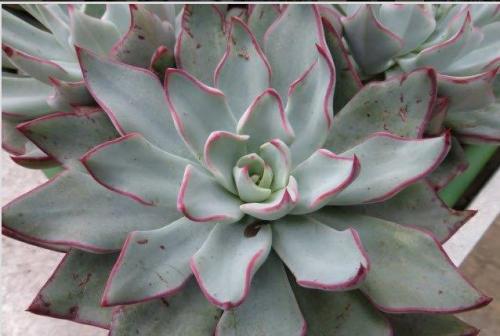
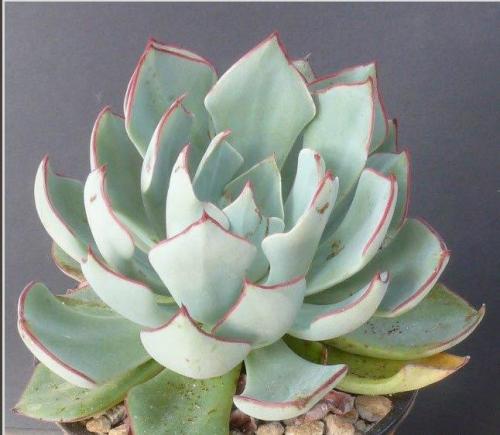
From Sierra Delicias, Coahuila :
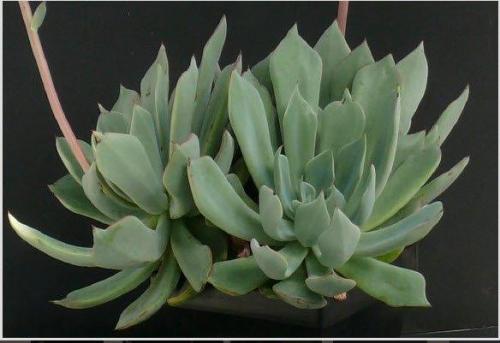
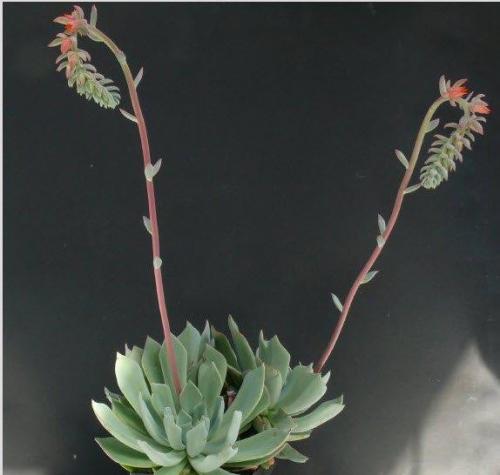
Photos Gerhard Köhres
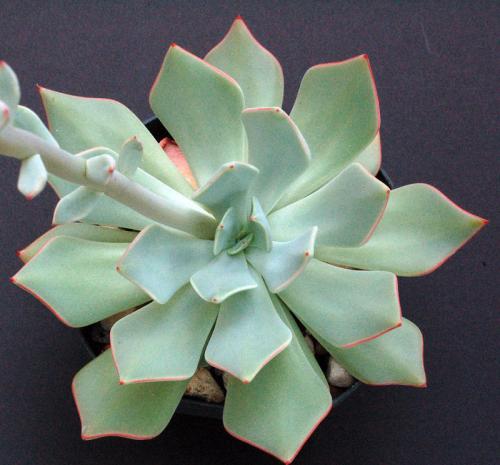
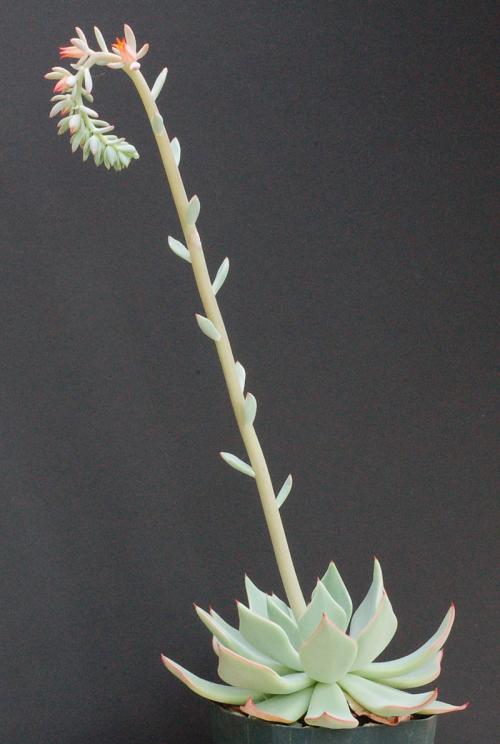
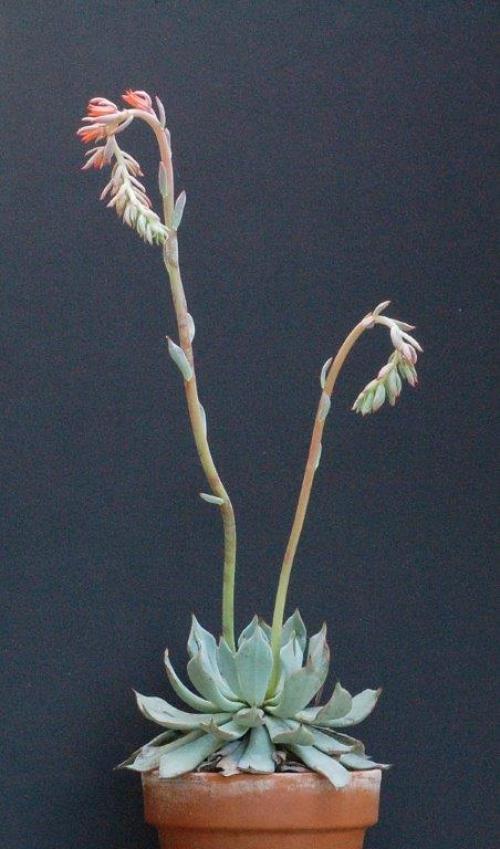
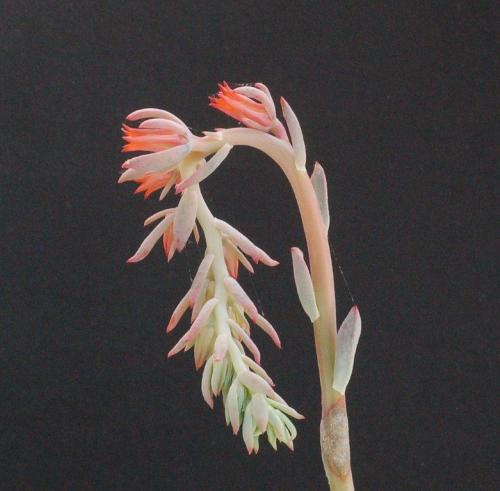
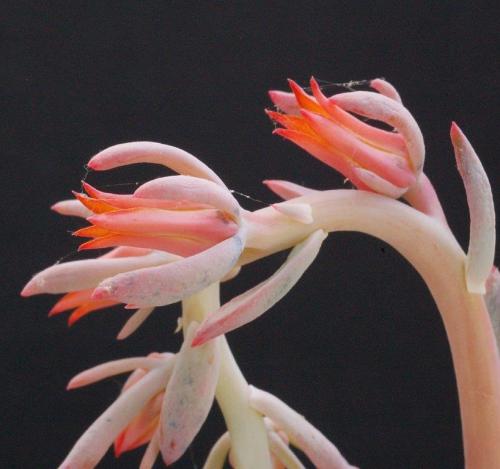
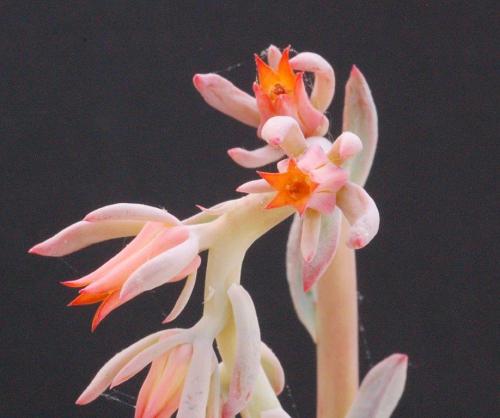
Photos Bernie DeChant
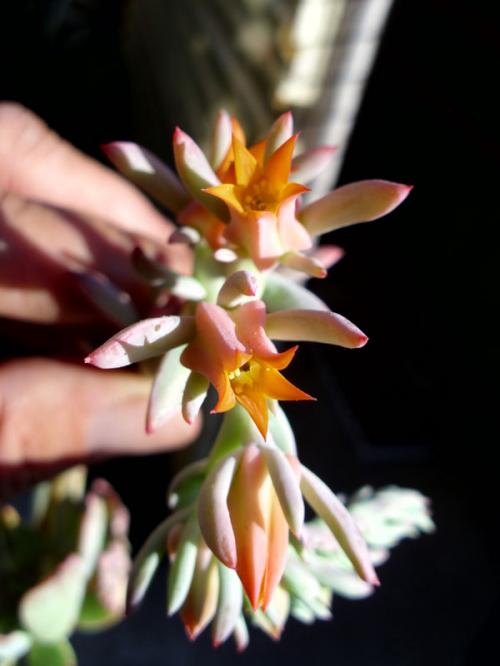
Photo Christophe Camassel
Seeds of E. strictiflora :
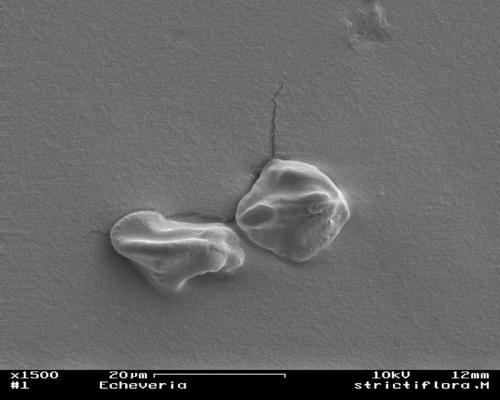
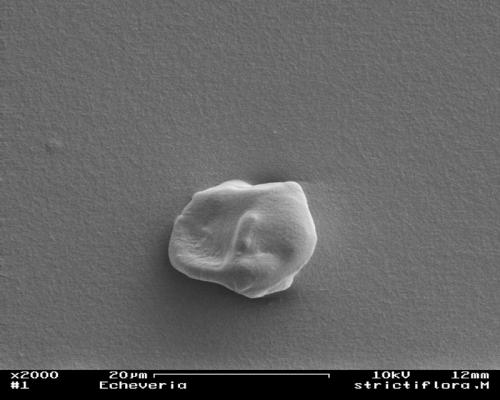
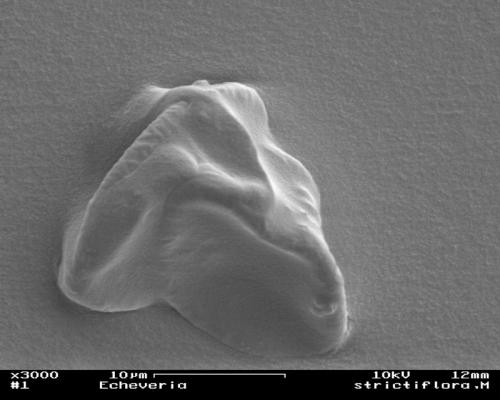
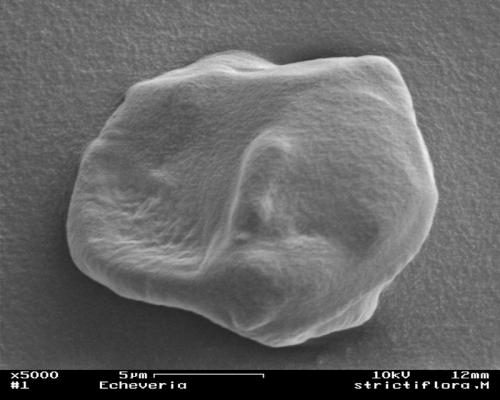
E. strictiflora, Parras :
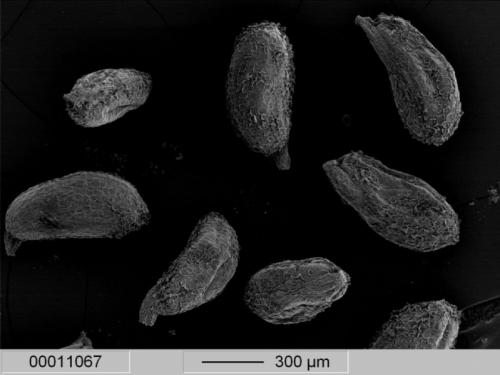
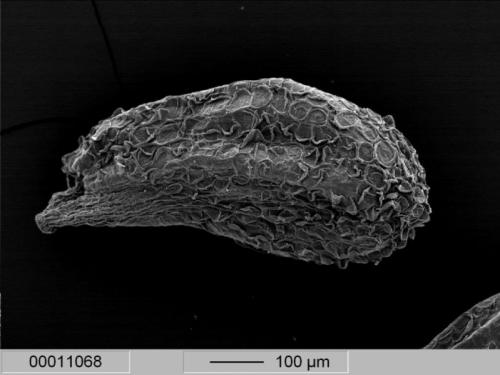
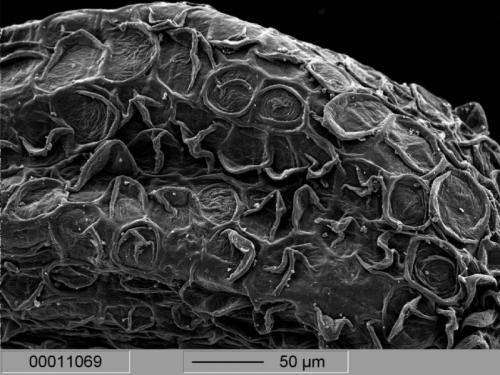
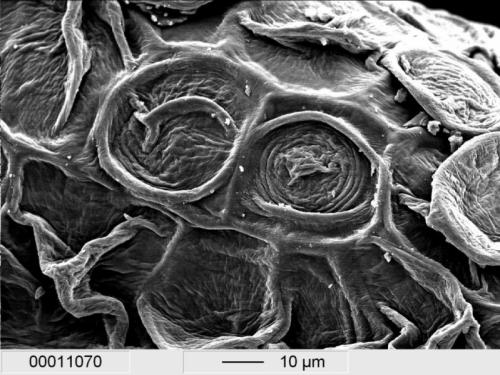
E. strictiflora, Esperanza :
